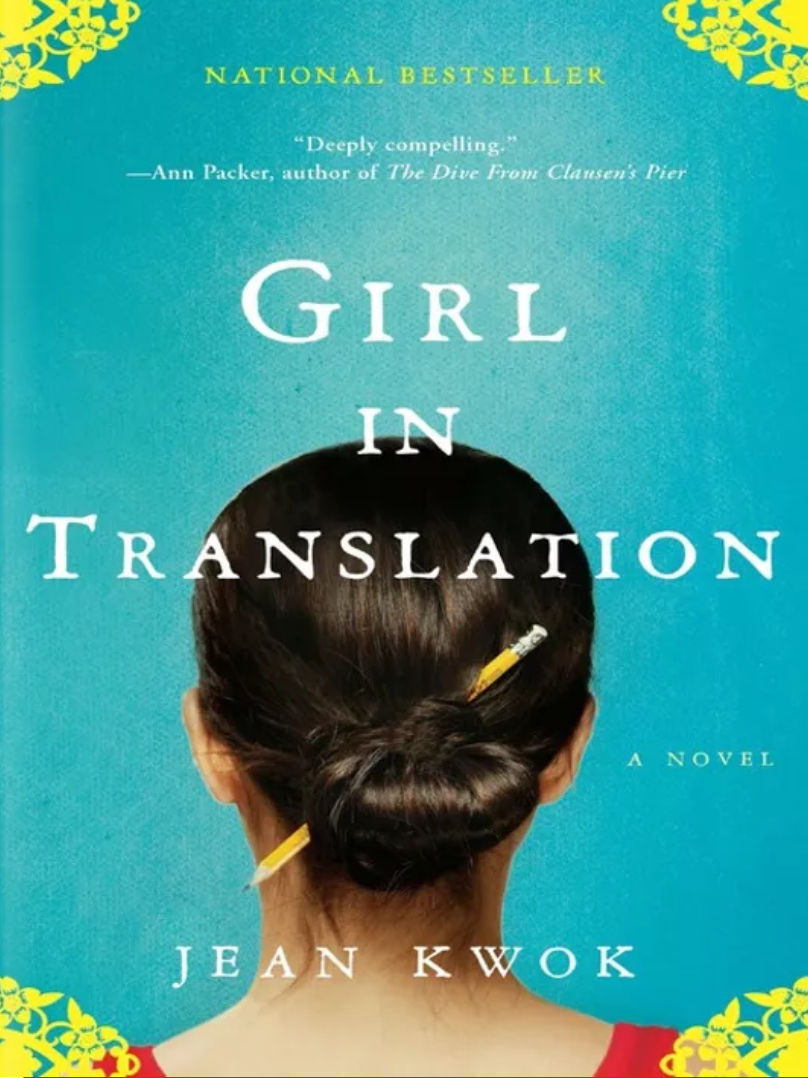If you haven’t read a Jean Kwok book, get started! I originally read The Leftover Woman and a follower actually recommended her debut novel – Girl in Translation. I flew through this at a rapid pace. A young girl and her mother’s harrowing experiences in a cockroach-infested apartment, a sweat shop in Chinatown and her never-ending determination to change their fate kept me turning the page for more.
Girl in Translation Book Summary

When Kimberly Chang and her mother emigrate from Hong Kong to Brooklyn squalor, she quickly begins a secret double life: exceptional schoolgirl during the day, Chinatown sweatshop worker in the evenings. Disguising the more difficult truths of her life like the staggering degree of her poverty, the weight of her family’s future resting on her shoulders, or her secret love for a factory boy who shares none of her talent or ambition. Kimberly learns to constantly translate not just her language but herself back and forth between the worlds she straddles.
Through Kimberly’s story, author Jean Kwok, who also emigrated from Hong Kong as a young girl, brings to the page the lives of countless immigrants who are caught between the pressure to succeed in America, their duty to their family, and their own personal desires, exposing a world that we rarely hear about.
Jean Kwok’s debut novel dramatizes the tensions of an immigrant girl growing up between two cultures, surrounded by a language and world only half understood. Girl in Translation is an unforgettable and classic novel of an American immigrant--a moving tale of hardship and triumph, heartbreak and love, and all that gets lost in translation.
Girl in Translation Discussion Guide
Kimberly straddles two worlds – the traditional Chinese culture and the American culture. How does this dichotomy impact her sense of belonging? How does it shape her identity?
The novel explores stark contrasts between Kimberly’s social and economic status and those of her classmates. Even Annette doesn’t seem to grasp the depths of Kimberly’s poverty believing sweat shops and inhuman living conditions simply don’t exist in America. How does this disparity comment on social mobility?
In many ways Kimberly takes over the position of head of household after her family moves to New York. Was this change in roles inevitable? How do you imagine Ma feels about it? In which ways does Ma still fulfill the role of mother?
The story is set in the 1980s. Do you think immigrant experiences are much different today? What has changed? What has remained the same?
If you loved this book, check out The Island of Sea Women or Counterfeit next!
Some content may contain affiliate or referral links. As an Amazon Associate, I also earn from qualifying purchases. When you click on and/or make a purchase through an affiliate link placed on Lifetime Tidbits, I may receive a small commission or other form of compensation at no additional cost to you. Please see my Disclaimers Page for more information. Thank you for reading!

Comments